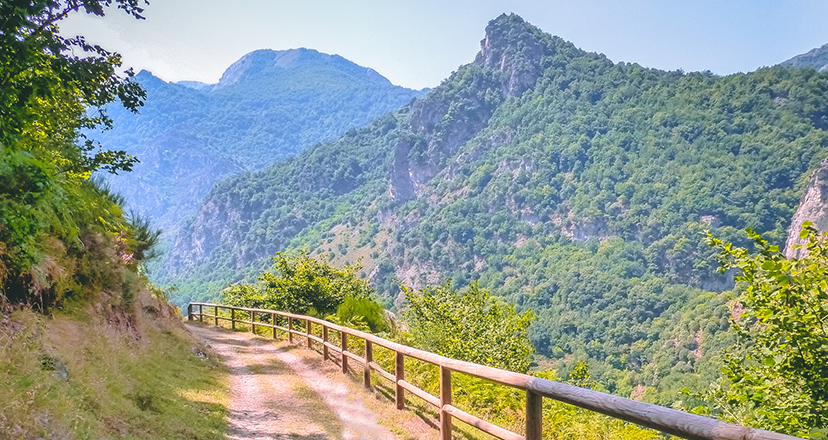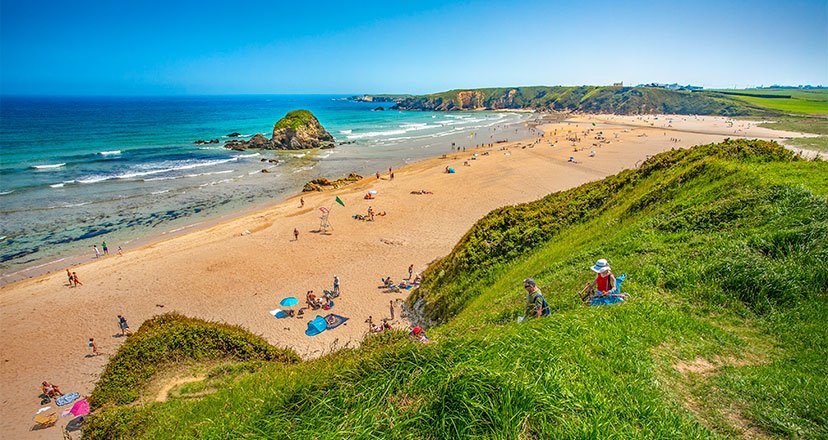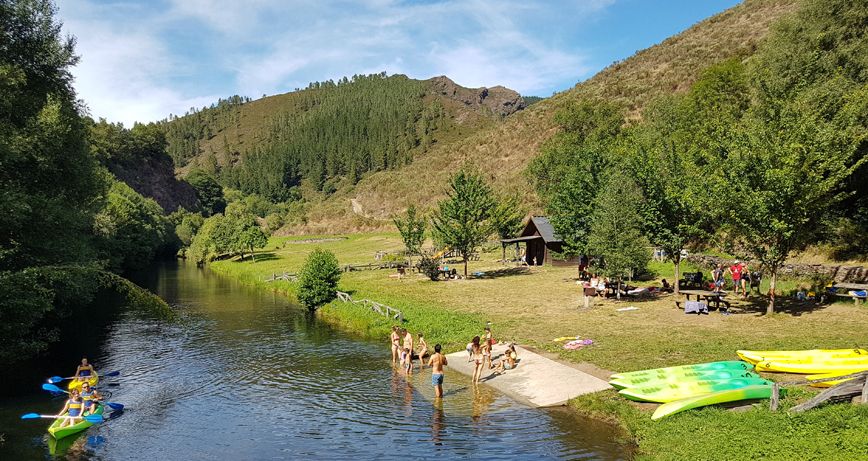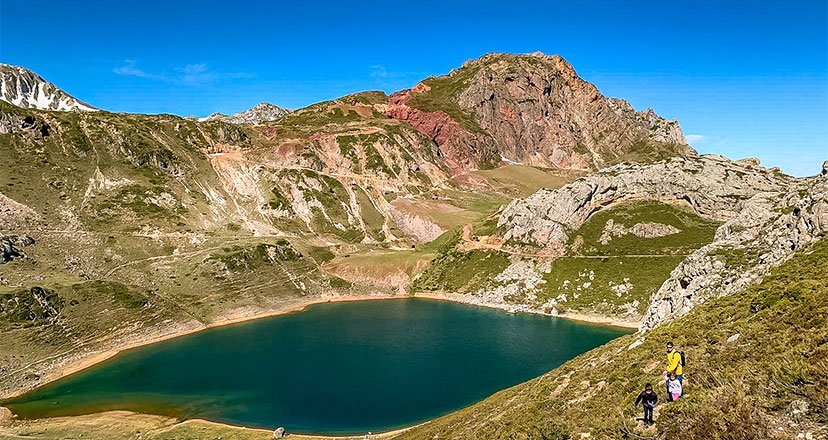Back Easy routes to do with children in Asturias
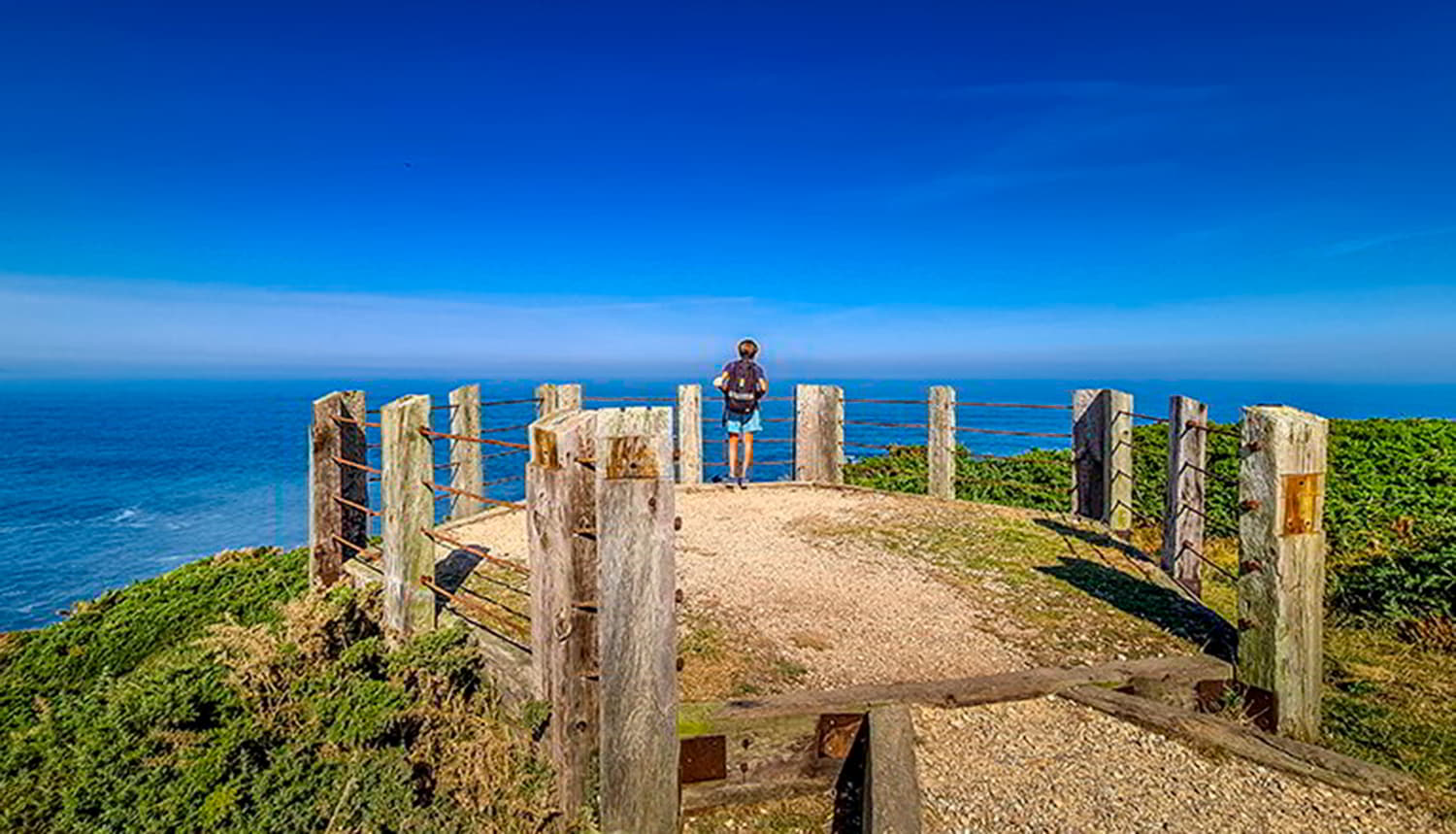
Easy routes to do with children in Asturias
Asturias is an ideal place for family tourism, so here are some easy routes for your children to enjoy this natural paradise!
Asturias is an ideal place for family tourism. The tranquillity of its corners, the friendliness of its people, the healthiness of its nature, and its tasty cuisine are key conditions for unlimited enjoyment for both children and adults.
Children "enjoy it" with those family walks where they discover beautiful beaches or impressive cliffs. Or where they reach that dream village, that braña that transports them to the past. Or where they can cool off in a stream, a river or a waterfall. Or where their parents discover ruins that seem magical, like something out of a fairy tale?
One of Asturias's most outstanding assets is the fact that there are routes and trails for all preferences and levels of difficulty.
So here we show you some easy routes so that your children will fall in love with Asturias!
The river fork in Santa Eulalia de Oscos
Oscos is a land of friendly people and landscapes, where everything is very easy.
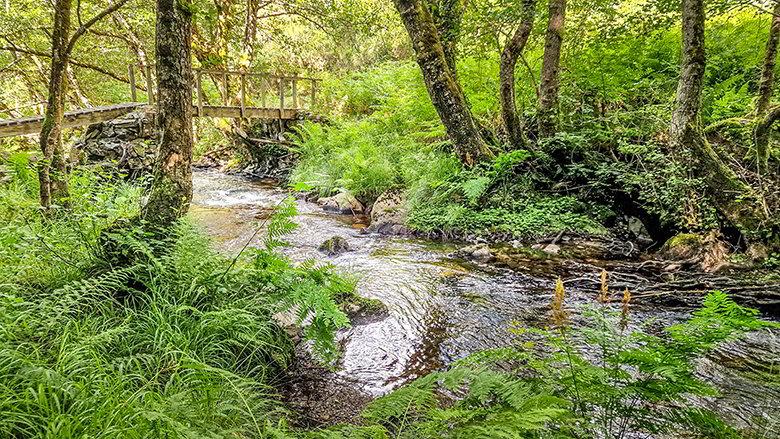
One of the best activities for the whole family to enjoy in this region is hiking. And one of the ideal routes to do with children is the Forcón de los Ríos route, in Santa Eulalia de Oscos.
This is aroute where nature and ethnography go hand in hand. Almost twelve kilometres in a circular route, which starts next to the cultural centre of Santa Eulalia de Oscos and ends in Ferreirela de Baxo, where the Museum of the Marquis of Sargadelos' Birthplace is located. This museum faithfully represents the traditional housing of Los Oscos, as well as the traditions of rural life in the area.
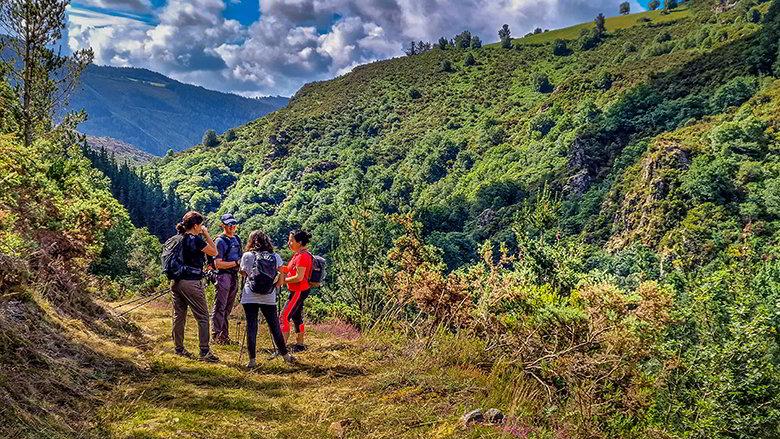
From the start to the finish, you will pass through forests of oak, birch and pine trees, and you will see livestock farms such as the one in Millarado. Villages such as As Poceiras, Vega del Carro, A Valía, San Julían, Caraduxe or Ferreirela de Riba add a high ethnographic value to this route that has very fluvial nuances, given that it is named after the confluence of the rivers Villanueva and Barcia.
La Regueirina trail in Tineo
The Senda La Regueirina will delight you with three and a half kilometres of circular route in the heart of the Asturian countryside.
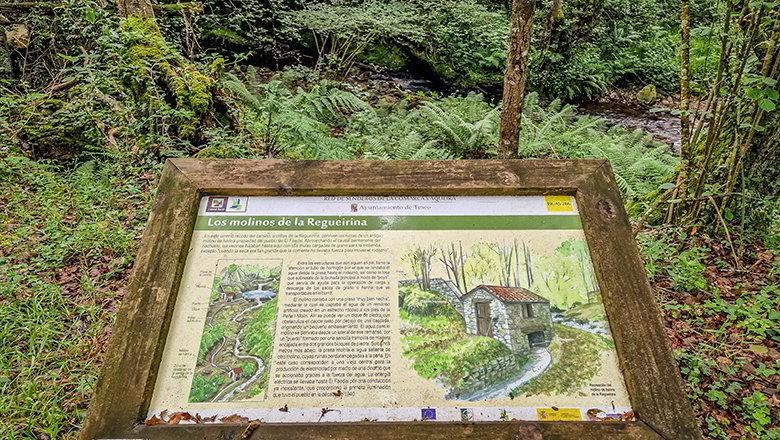
You will take as a reference the village of El Pedregal, located between La Espina and Tinéu, and you will start the route in the hamlet of El Faidal, and there, next to a hermitage, you will begin the walk. After leaving the track, you will walk between stone walls and over a blanket of grass, beginning the descent towards a beautiful chestnut grove.
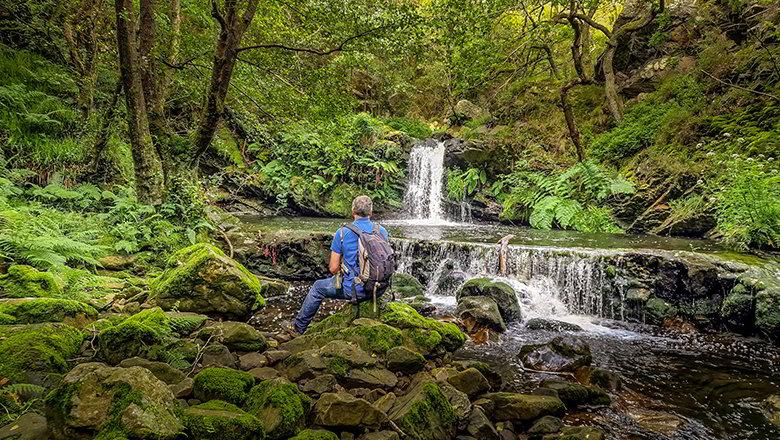
Shortly after, you will cross the Regueirina stream over some stones and begin a slight, short climb to reach the El Faidal mill shortly after. In a small clearing you will find a table and next to it the remains of the mill.
Continuing along the route, you will soon reach the highest point of the route, overlooking Peña Manteca, which belongs to the neighbouring council of Belmonte. A little further on, along the track, you will reach the village of El Faidal again.
Cape Busto Route in Valdés
A route with seven viewpoints overlooking the sea, which will give you a feeling of immensity, peace and tranquillity in abundance.
Beautiful and impressive cliffs and rocky beaches are landscapes that will accompany you along the route.
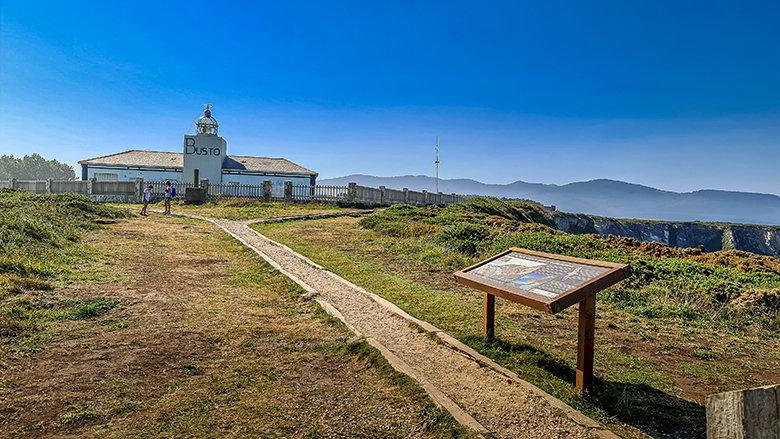
This eight-kilometre circular walk really is a very important one. It starts and ends in the village of Bustu, and will take you through farms, pine forests, oak groves, riverside woodland, and above all, along the edge of the cliffs, enjoying the sea and the views, both to the east - Cape Vidio - and to the west, looking towards Luarca/Ḷḷuarca.
From the viewpoints you can see crystal-clear waters below the lighthouse and sea beds of singular beauty that invite you to go snorkelling or scuba diving.
In addition, the forests along the route are home to jays and sparrowhawks, which you will be able to hear and perhaps see, if you are lucky.
And all this while taking special care in the area of the cliffs, especially with children.
Coastal path of Lluanco/Luanco-Bañugues in Gozón
The Luanco-Bañugues path, in Gozón, is highly recommended for the beauty of the landscapes through which it passes. We suggest you start the excursion in Lluanco/Luanco, at the height of the Nautical Club - next to the beach -. There, up some stairs, begins the pedestrian path that links Luanco with Bañugues.
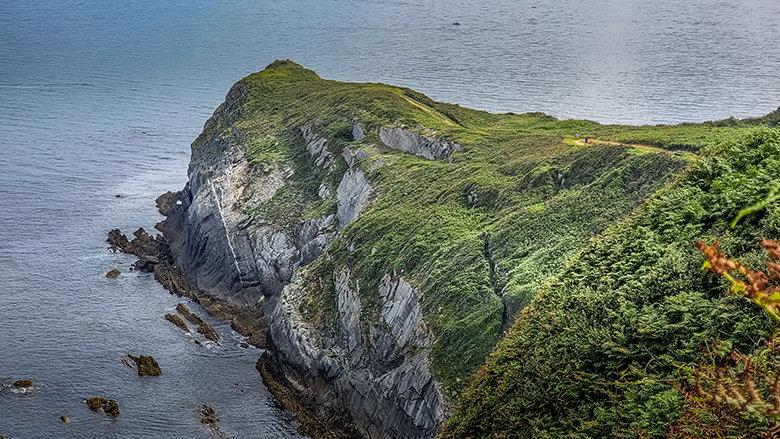
The first part of this route runs through the Sierra de Peroño mountain range, with wonderful views of the Cantabrian Sea and the coastal cliffs. You will find natural watchtowers such as Punta de la Vaca, and you will soon reach the port of Moniello and its beach, which has a viewpoint and a recreational area nearby, perfect for a break and a picnic. From there you can also go to Punta Palleya, where there are natural pools for a relaxing swim while contemplating the horizon.
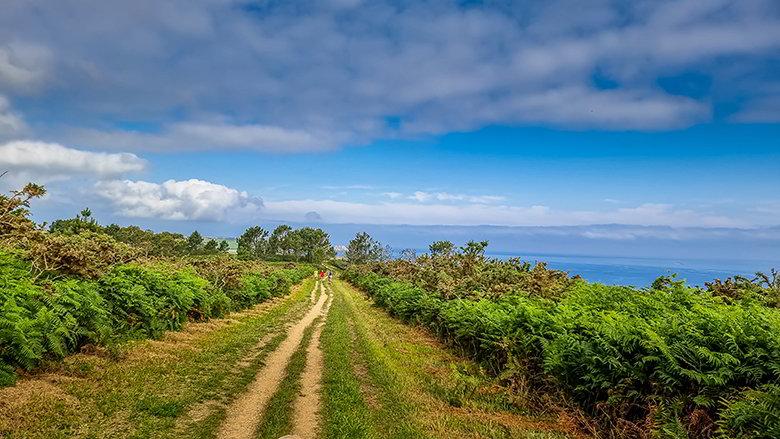
From there, we go straight to the recreational area of Bañugues, where we finish the route, but not before making a few stops at successive natural viewpoints. In total about twelve kilometres there and back.
Path La Peridiella in Piloña
The La Peridiella path starts in a privileged enclave: the Sanctuary of the Virgen de la Cueva in Piloña, barely three kilometres from the capital of the council, L'Infiestu.
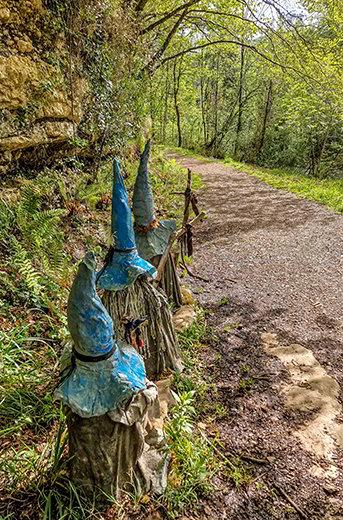
In reality, you will be taking a walk in the heart of nature, adorned with a touch of magic. It is a linear route of approximately eight kilometres on the outward and return legs, with very little gradient, which makes it very comfortable, and in an idyllic setting. There is also an alternative circular route of one and a half kilometres.
The route runs along the banks of the river Marea, and has a very good surface. It is therefore suitable for a family walk or for sporting activities.
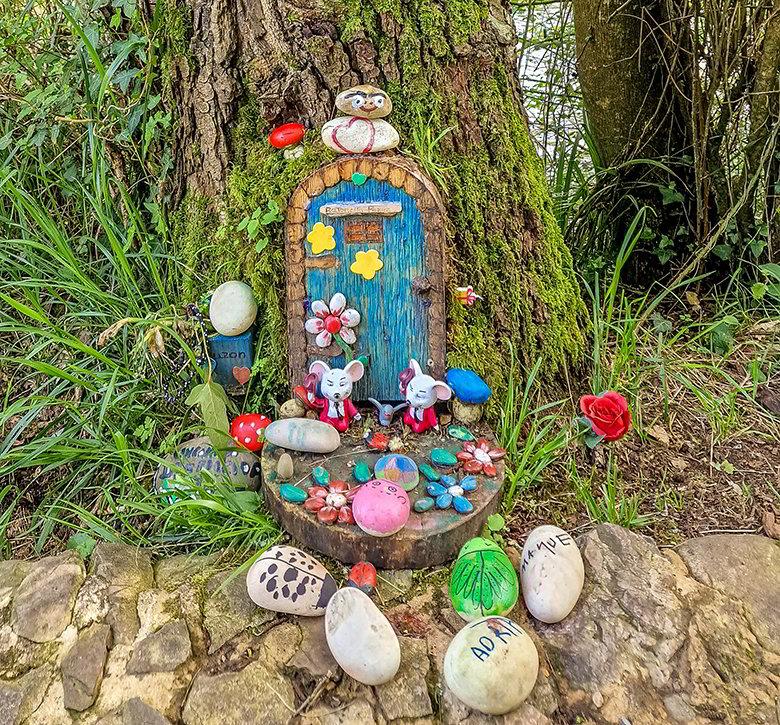
But this walk is also a gateway to other worlds, as along the way you will come across mythological and fantastic figures, as well as doors and messages that will take you into a world of dreams and boundless imagination.
Theentire decoration of the route is the work of the artist Ángeles Cobián, who began by placing her work on a tree and, having seen how well it was received by walkers, she gradually developed her artistic project.
Nowadays the route has been popularly christened the 'senderu máxicu', and the truth is that it is a very pleasant experience.
Route of the Cliffs of Hell in Ribadesella
The cliffs of El Infierno, in Ribadesella, are the protagonists of a simple and beautiful coastal route. The route starts at the Cuerres recreational area, very close to Guadamía beach, which is the natural border with the council of Llanes, and reaches the vicinity of Ribadesella/Ribeseya.
It is important to know that the route does not follow a path as such, but runs partly along paths and partly through meadows, but you should always keep an eye on the coastline, which is what sets your course.
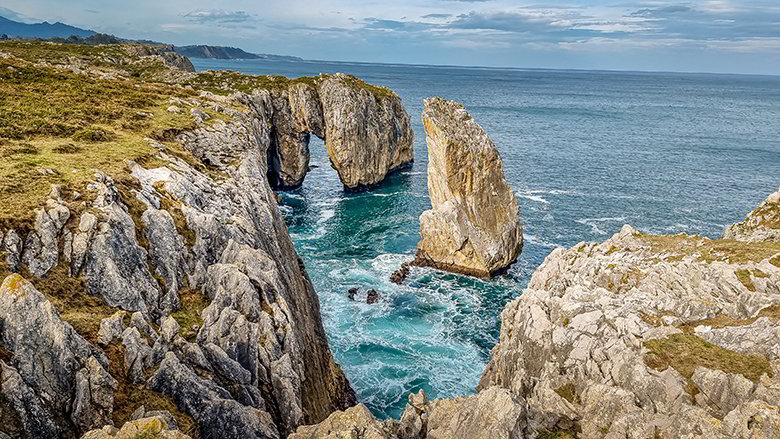
Before starting the route, you can make a stop to contemplate the bufones - vertical holes or cavities that connect with the sea from the cliff - of the place, which are found in the first 300 metres of the route.
Then, after a kilometre's walk, you will see majestic cliffs such as those of Castro Arenas and Tomasón.
A little further on, three kilometres into the route, you will be in front of the islet of Palo Verde, which gives its name to the cliffs in the area.
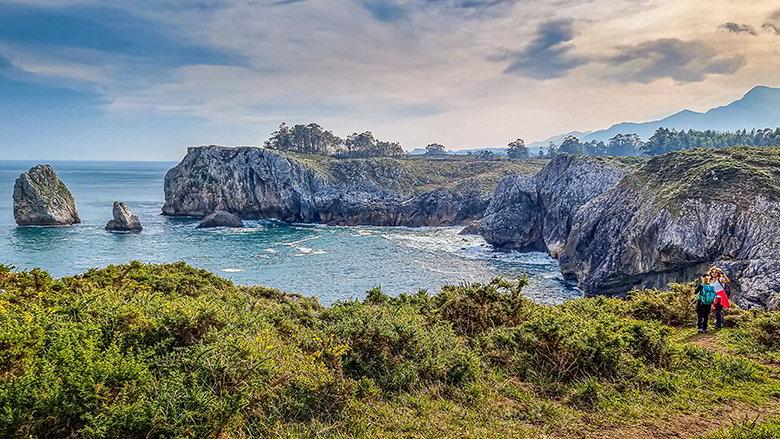
After about five kilometres from the start of the route, you will come to thefamous cliffs of El Infierno. Half a kilometre further on, at the end of the walk, the path comes to a fork in the road: the left branch goes backwards and the right branch towards the village of Ribadesella/Ribeseya.
Always take the necessary precautions, especially with children, as this is a cliff-side route.
Invisible Valley Path in Llanes
Another of these trails with a magical touch is the Invisible Valley in Llanes. Here you'll find wood and stone carvings, information panels on the area and the history of the town, as well as pieces of the book El Valle Invisible (The Invisible Valley).
It is a twelve-kilometre route, which can be done at your leisure. The starting point is the village of San Roque del Acebal, just behind the local service station.
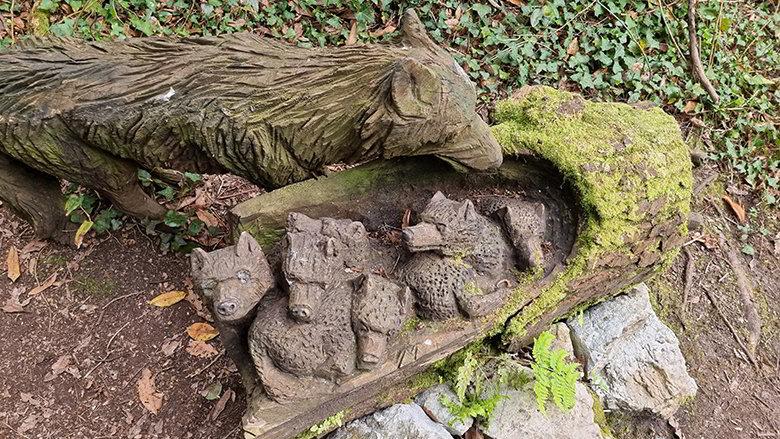
You will be in the middle of the Camino de Santiago, walking to the Cuetos inn and then to the Malatería de San Lázaro, a hospital that was very important for Llanes. Then you will go up to the Cuera viewpoint, which offers splendid views of the whole area. Fountains - such as the Casar or the Cagalín -, forests, and neighbourhoods will follow one after the other before your eyes, as well as some wood carvings, until you reach the mysterious Collubina cave, which houses another carving.
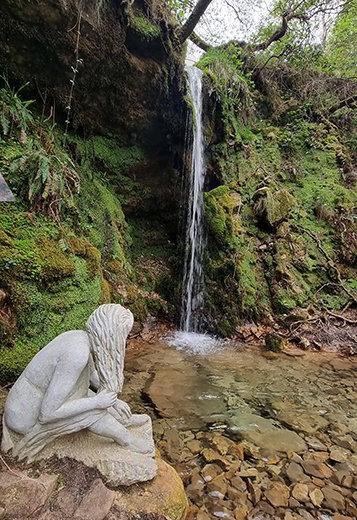
You will also walk along the Caminu Real and the always disturbing Caleya de las Ánimas, where the Humilladero or Capilla de las Ánimas is located, a place where pilgrims used to leave their alms for the malatos (sick).
After a forest of holly trees and the start of the most intense climb of the route, you will reach a high area from where you can see the whole coast. Then the descent to the Riega de los Molinos, where you will see the remains of seven old mills. You will continue along the route, seeing carvings and sculptures, one of the most representative being that of the xana, which is located at the foot of a waterfall.
And after this idyllic scenery, you will slowly make your way back to the starting point.
The Cave of El Pindal and the Monastery of Tina in Ribadedeva
El Pindal Cave and Tina Monastery, both in Ribadedeva, are two unmissable landmarks on one of the easiest and most charming routes in the heart of nature. From this cave, a UNESCO World Heritage Site - whose wooded setting with views of the sea is simply spectacular - it is only a few metres to the hermitage of San Emeterio - Santu Mederu, Santumedé or Santumé in Asturian - another idyllic spot.
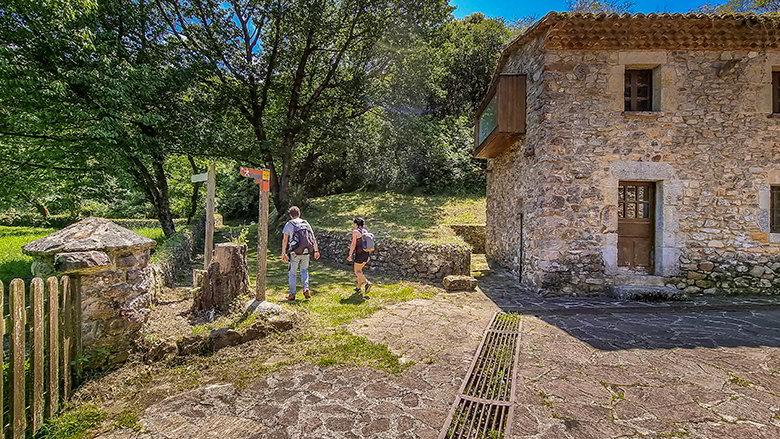
From here along a beautiful path, on the Camino de la Costa, you can discover the ruins of the monastery of Santa María de Tina, whose origins date back to Christian settlements in the 12th and 13th centuries, and which is an exponent of the art and monastic life of the late 12th and early 13th centuries. A total of two kilometres there and back.
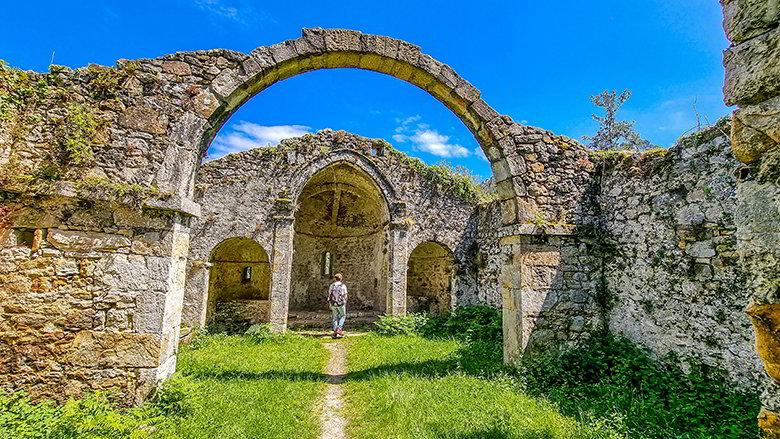
You can take the opportunity to visit the village of Pimiango, a beautiful and unique place, where you can have a drink in a café-bookshop, something unusual.
Also, very close by is the viewpoint of El Picu, which will take you to the Cave of El Pindal. The El Picu viewpoint is unique in Asturias for several reasons: Because it offers splendid panoramic views of the sea and the mountains. Because in a 360º sweep it shows the Cuera mountain range, the Picos de Europa and a good part of the eastern coast of Asturias. Because on clear days you can see with absolute clarity the great colossus of the central massif of the Picos de Europa: the Picu Urriellu or Naranjo de Bulnes.
And to do any route safely, don't forget to follow this advice
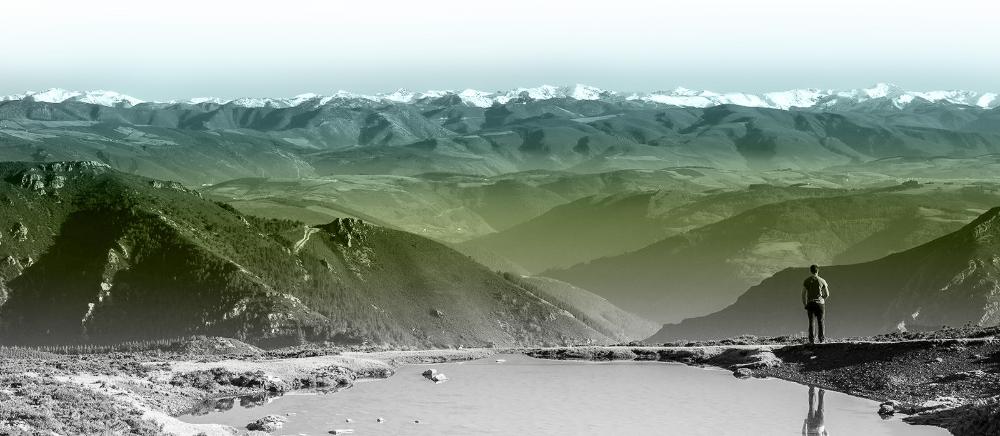
Subscribe to our newsletter and take advantage of offers, discounts, and news
Subscribe


